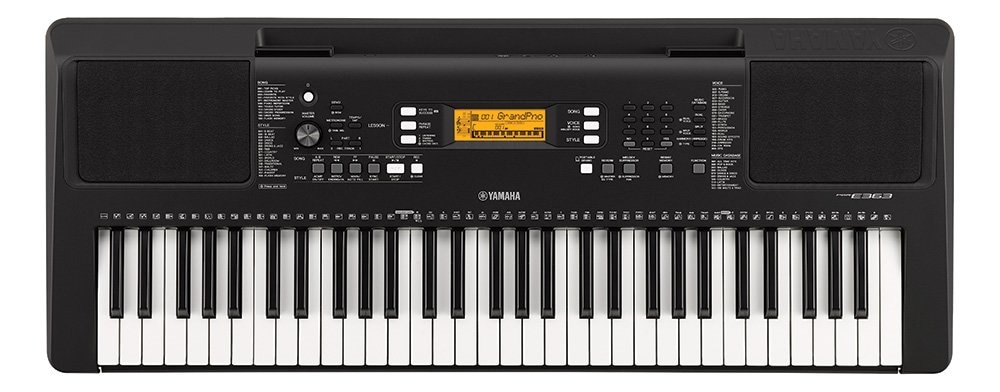Keyboard Instruments Explained

Often, people don’t fully understand the differences between the various forms of electronic, keyboard-based instruments. The aim of this article is to bring some clarity, and to help you choose the instrument that is best suited to your needs.
SYNTHESIS
Let’s start with the concept of synthesis (not the synthesizer itself just yet; that’s for later!). In essence, sound synthesis makes use of electronics to produce electrical signals that, ultimately, we hear as sound. There is a great number of different methods of synthesis. Early analogue synthesizers date back to the 1960s and 70s, with some of the most famous designs being created by synth pioneers Robert Moog and Don Buchla. Among the many other types of synth methods are wavetable synthesis, frequency modulation, physical modelling and sample-based synthesis. Sample-based synthesis is, perhaps, one of the most widely used synth methods employed in modern digital keyboard instruments, and it works exactly as its name implies – the sounds of real instruments are captured (or rather, sampled) and stored within the instrument, ready for the musician to play from the keyboard. Because of its ability to faithfully reproduce sounds in very high quality, sample-based synthesis forms the basis for many keyboards, digital pianos, stage pianos and, of course, synthesizers. So, if the synthesis technology can be common to all of these instruments, what exactly is the difference between them? Let’s examine each type.
KEYBOARDS

The term “keyboard” – or, properly, “portable keyboard” – usually refers to a small, compact digital keyboard with, typically, 49 or 61 keys. While the keyboard action is often touchsensitive, most models do not feature a weighted keyboard action, meaning that they are lighter and easier to transport. Generally, models offer a wide range of sounds to choose from, on-board automatic accompaniment and on-board loudspeakers. Some models may also offer convenient self-tuition functionality.
DIGITAL PIANOS

The job of a digital piano is to offer a convincing alternative to a traditional acoustic upright or grand piano. This is achieved by providing superior sound quality, often by sampling premium acoustic piano models such as Yamaha’s flagship CFX concert grand piano. Naturally, digital pianos have 88 keys and a weighted keyboard action. Some of them faithfully reproduce the feel of an acoustic piano’s graded hammer action. Digital pianos are available in upright- and grand-style cabinetry, in order to best suit the look of the environment in which they will be placed.
STAGE PIANOS

The stage piano incorporates a specific set of features designed for use in live performance and studio recording. Lightweight and with a high-quality weighted keyboard action, it offers excellent sound quality and is suited to a variety of musical styles. It is important that a stage piano is extremely easy and efficient to use under the time pressures of a performance environment; in fact, many stage pianos strip away lesser-used functionality in order to provide the best possible performance instrument for a wide range of live and studio-based musicians.
SYNTHESIZERS

The synthesizer category is extremely broad, ranging from small-format portable devices designed to perform a specific task – such as Yamaha’s reface Series – to highly expressive and complex machines, often known as “workstations”. While a number of modern synthesizers can perform many of the duties of the previously mentioned digital keyboard types, where the synthesizer excels is in the creation of brand new sounds – either by making them from scratch or by “editing” the existing on-board sounds. Some synthesizers, such as Yamaha’s MODX Series, even offer multiple synthesis types, such as FM (frequency modulation), which was made famous in the 1980s by the legendary DX7. Synthesizers are available in many different keyboard configurations, and some series of synthesizer may be offered with 61-, 76- and 88-note weighted key variants to suit the requirements of the musician.
SO WHERE DOES THIS LEAVE YOU?
Choosing a digital keyboard instrument is all about what you want to use it for. If many instruments are required for a music lab, portable keyboards may be the most suitable. If an instrument needs to be moved around quite often for various performances where sound quality is of paramount importance, then a stage piano could be a very good fit. And, if you need to produce epic orchestral or other-worldly soundtracks for movies or games, a synthesizer could be your go-to instrument for many years to come.
